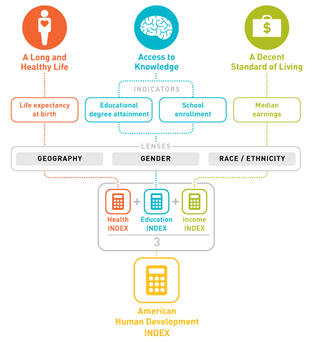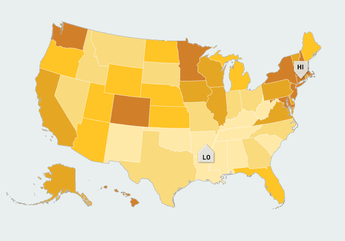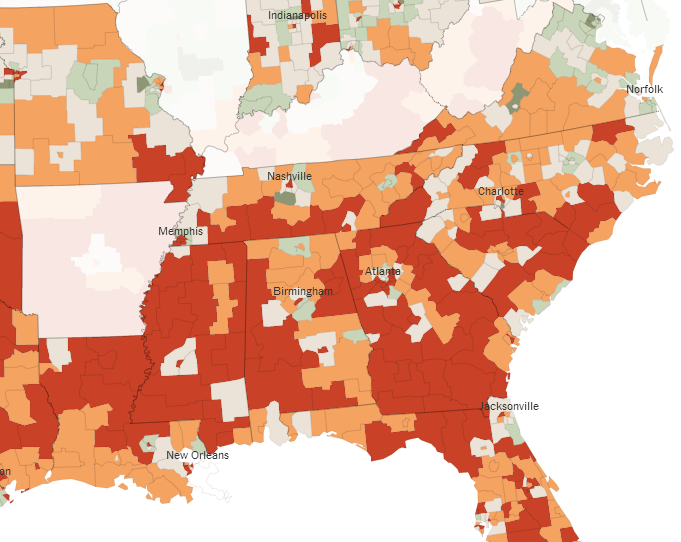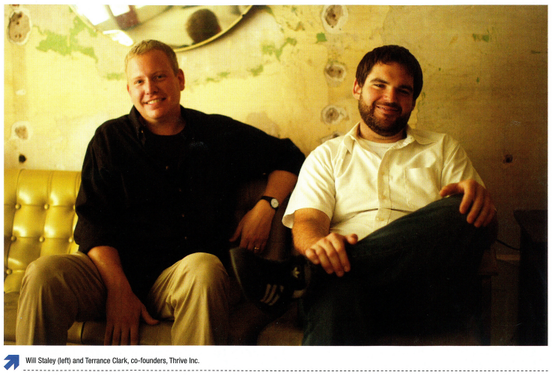When I moved to the Mississippi Delta, I did so with the understanding that I was entering into a narrative much greater than myself. More than any other time in my life, I became a student of a place and its history; and I sought to examine my hopes and motivations through a critical, historical lens.
For someone who was not native to the area, a critical asset in my game of catch up was the canon of literature that strives to tell the story of the Delta - books like The Most Southern Place on Earth, Rising Tide, Lanterns on the Levee, Confederacy of Silence, and Dixie. These books, among others, sped me along during my four years there and helped me make deeper meaning of the time I spent in that tormented, beautiful place.
Now that we've moved to Eastern North Carolina, I've found myself wondering how I might play that same game of catch up. My immediate ties are deeper to this region - my wife and her family are from here, but making meaning of this area seems to be more difficult in the literary arena. A simple Google search brings up mostly books related to the Outer Banks, nature, and Nicholas Sparks.
Today, I learned that Google was the wrong place to look. While on a school visit, I stumbled into an ambassador of history - Rev. William Barber, President of the North Carolina NAACP and former student body president of Plymouth High School in Plymouth, NC. Rev. Barber has been a loyal steward of the burgeoning Moral Monday movement in North Carolina, which is a reaction to the regressive state legislation that was passed over the summer.
For someone who was not native to the area, a critical asset in my game of catch up was the canon of literature that strives to tell the story of the Delta - books like The Most Southern Place on Earth, Rising Tide, Lanterns on the Levee, Confederacy of Silence, and Dixie. These books, among others, sped me along during my four years there and helped me make deeper meaning of the time I spent in that tormented, beautiful place.
Now that we've moved to Eastern North Carolina, I've found myself wondering how I might play that same game of catch up. My immediate ties are deeper to this region - my wife and her family are from here, but making meaning of this area seems to be more difficult in the literary arena. A simple Google search brings up mostly books related to the Outer Banks, nature, and Nicholas Sparks.
Today, I learned that Google was the wrong place to look. While on a school visit, I stumbled into an ambassador of history - Rev. William Barber, President of the North Carolina NAACP and former student body president of Plymouth High School in Plymouth, NC. Rev. Barber has been a loyal steward of the burgeoning Moral Monday movement in North Carolina, which is a reaction to the regressive state legislation that was passed over the summer.
And suddenly history was all around me. I'm recalling much from memory and apologize for any errors, but here's what I learned:
During the latter portion of the Civil War, Plymouth, NC was the first free area in North Carolina after Gen. Sherman marched through.
During Reconstruction, the state government established a normal college in Plymouth that was intended to educate residents of the majority-black area of the state. This university was ultimately uprooted by Gov. Aycock in 1902 and merged with what is now Elizabeth City State University. (As it so happens, this one maneuver echoes into the present day. Elizabeth City is much less centrally located in the region, while a college in Plymouth would have been much more readily available to uneducated blacks who had a deep need for the services such an institution would provide.)
More recently, when he was entering kindergarten in the late 1960s, Rev. Barber's parents moved back from Indianapolis to Plymouth (where his father's family is from) with the express aim of integrating the elementary school in Plymouth. And in high school, a young Rev. Barber became the first student body president to break the model of one white/one black SBP and become president of the entire student body. His mom - who still works at Plymouth High and greets me kindly whenever I visit - was the first black office manager at the high school.
I'm walking to my car, and I'm suddenly in the middle of a history lesson. I decided right then that this was only the start, and I told Mrs. Barber that I was going to be back in two weeks - this time with a recorder and a listening ear. She smiled.
During the latter portion of the Civil War, Plymouth, NC was the first free area in North Carolina after Gen. Sherman marched through.
During Reconstruction, the state government established a normal college in Plymouth that was intended to educate residents of the majority-black area of the state. This university was ultimately uprooted by Gov. Aycock in 1902 and merged with what is now Elizabeth City State University. (As it so happens, this one maneuver echoes into the present day. Elizabeth City is much less centrally located in the region, while a college in Plymouth would have been much more readily available to uneducated blacks who had a deep need for the services such an institution would provide.)
More recently, when he was entering kindergarten in the late 1960s, Rev. Barber's parents moved back from Indianapolis to Plymouth (where his father's family is from) with the express aim of integrating the elementary school in Plymouth. And in high school, a young Rev. Barber became the first student body president to break the model of one white/one black SBP and become president of the entire student body. His mom - who still works at Plymouth High and greets me kindly whenever I visit - was the first black office manager at the high school.
I'm walking to my car, and I'm suddenly in the middle of a history lesson. I decided right then that this was only the start, and I told Mrs. Barber that I was going to be back in two weeks - this time with a recorder and a listening ear. She smiled.









 RSS Feed
RSS Feed
